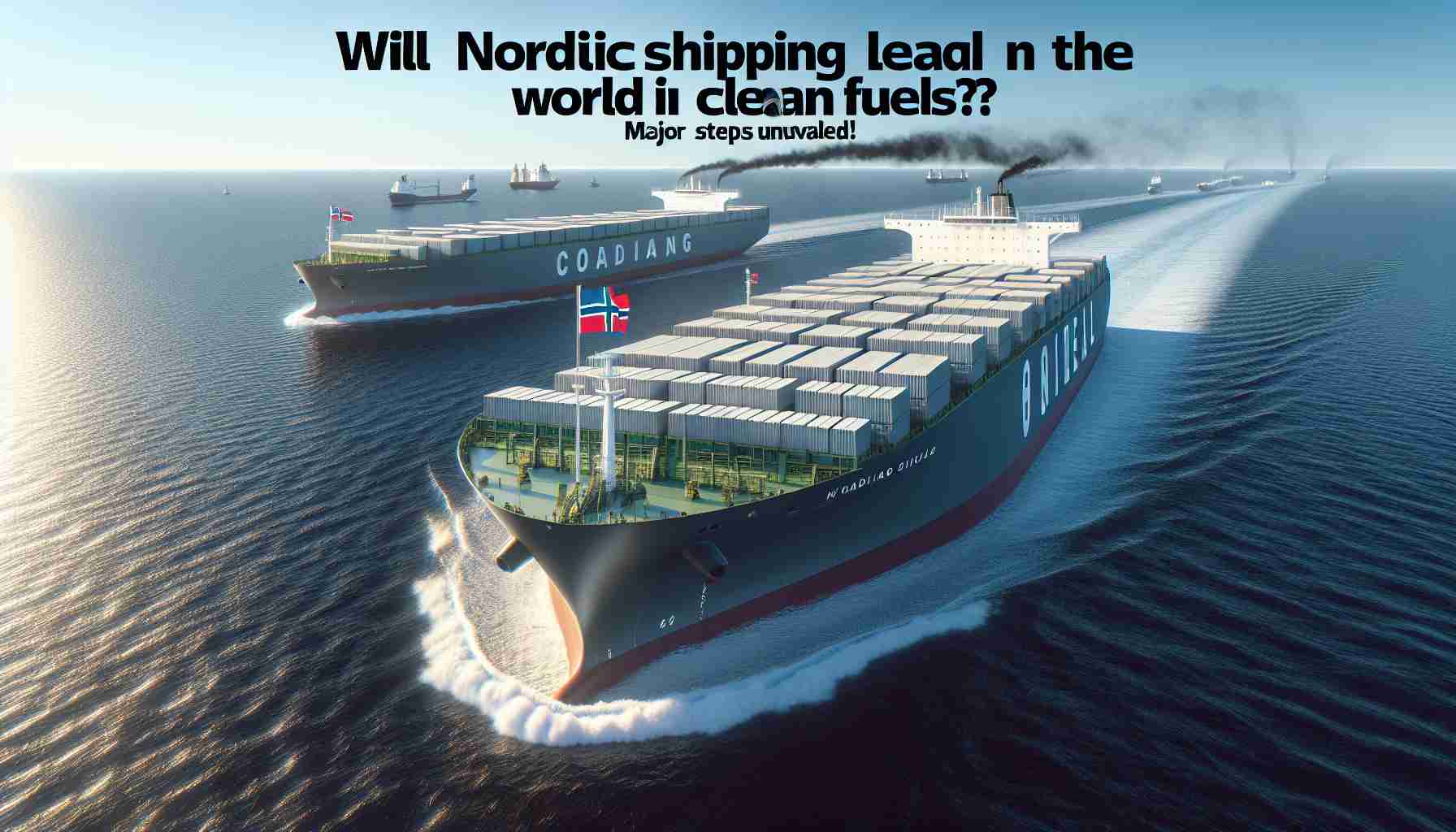A Groundbreaking Initiative for a Sustainable Future
The Nordic Roadmap project has launched an innovative Fuel Transition Roadmap for the shipping industry, highlighting the urgent need for decarbonization efforts in the Nordic region. Today at the High-Level Conference on Green Shipping in Copenhagen, crucial recommendations were presented to regional ministers, urging prompt actions to address the financial obstacles associated with transitioning to eco-friendly fuels.
With a commitment to meet international maritime emission reduction goals and ambitious local climate objectives, the Nordic countries aim for net-zero emissions by 2050. This strategic approach includes promoting a sustainable ocean economy, collaborating on infrastructure, and establishing green shipping corridors.
Central to the roadmap are three primary challenges impeding the adoption of zero-emission fuels: cost and demand, fuel availability, and technology and safety. To tackle these issues, a comprehensive plan comprising seven key building blocks and 20 specific actions has been proposed. Governments and industry players are encouraged to work together to operationalize these initiatives by 2030.
Among the pivotal recommendations, the roadmap emphasizes the need for governmental action to diminish the cost disparity for zero-emission fuels and expedite the rollout of green shipping corridors, with the first corridor expected to be operational by 2025. As stakeholders rally to transform shipping, Nordic nations position themselves as pioneers in the global shift toward sustainable energy solutions.
Transforming Maritime Transport: The Nordic Roadmap to a Sustainable Future
A Groundbreaking Initiative for a Sustainable Future
The Nordic Roadmap project has initiated a revolutionary Fuel Transition Roadmap aimed at accelerating the decarbonization of the shipping industry in the Nordic region. Unveiled during the High-Level Conference on Green Shipping held in Copenhagen, this initiative addresses the critical need for environmentally friendly practices in maritime transport. The proposal features actionable recommendations presented to regional ministers, highlighting the importance of overcoming financial hurdles associated with adopting cleaner fuels.
As part of an ambitious vision, the Nordic countries are committed to achieving net-zero emissions by 2050. This roadmap outlines a strategic framework to foster a sustainable ocean economy, improve infrastructure collaboration, and develop designated green shipping corridors.
Key Focus Areas: Challenges and Solutions
The roadmap identifies three primary challenges that must be addressed to facilitate the widespread adoption of zero-emission fuels:
1. Cost and Demand: The disparity in costs between traditional and zero-emission fuels poses a significant barrier to adoption.
2. Fuel Availability: Ensuring a reliable supply of eco-friendly fuels is critical for seamless transition and operation.
3. Technology and Safety: New technology must be developed and implemented safely to support the transition.
To address these challenges, the roadmap presents seven key building blocks and 20 specific actions designed to help the shipping sector transition by 2030. These components include partnerships between government entities and industry stakeholders to harness resources effectively.
Essential Recommendations for Progress
Among the primary recommendations set forth in the roadmap are:
– Governmental Intervention: A call for strong governmental policies to reduce the cost difference for zero-emission fuels.
– Green Shipping Corridors: The establishment of green shipping corridors, with the first corridor anticipated to be operational by 2025.
These recommendations are aimed at creating an actionable framework that stakeholders can leverage for transformative changes in shipping practices.
Pros and Cons of the Fuel Transition Roadmap
# Pros:
– Provides a structured approach to achieving sustainability in shipping.
– Promotes international cooperation among Nordic countries.
– Aims to stimulate innovation in fuel technologies and development.
# Cons:
– Implementation may face delays due to varying economic capacities of the Nordic countries.
– Dependence on governmental action might slow individual initiatives within the shipping industry.
Predictions and Trends
As the shipping industry undergoes a paradigm shift towards sustainability, following the Nordic Roadmap can set a precedent for similar initiatives worldwide. It is expected that:
– Other regions will adopt similar roadmaps as a response to environmental pressures.
– The demand for zero-emission fuels may rise, potentially lowering their cost over time.
– Technological innovations will emerge, focusing on enhancing the safety and efficiency of renewable fuels.
Conclusion
The Nordic Roadmap project represents a significant step forward in the fight against climate change in the maritime sector. By fostering collaboration and implementing innovative strategies, Nordic nations are on the path to becoming leaders in sustainable shipping practices. The commitment to net-zero emissions by 2050 challenges other regions to rethink their approach to maritime transport, emphasizing the urgency of continuous advancements toward a greener future.
For more information on sustainable initiatives, visit Nordic Roadmap.
